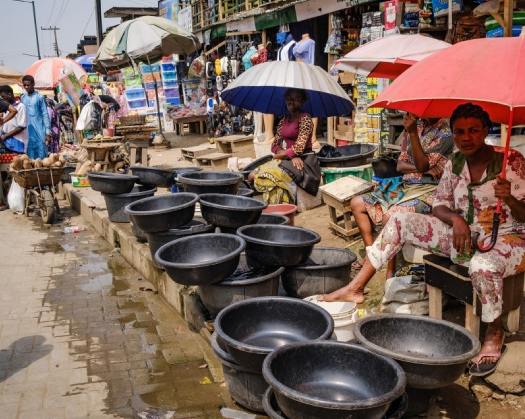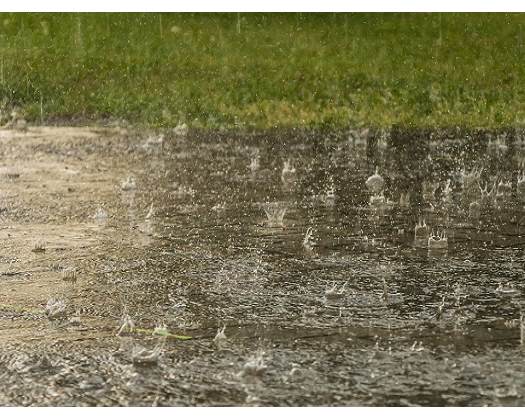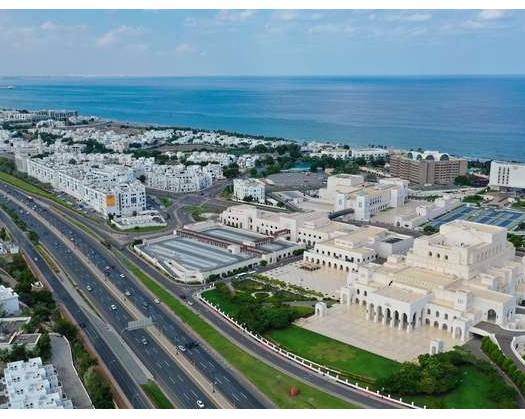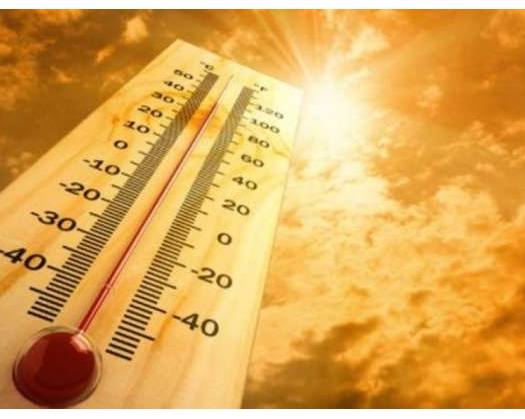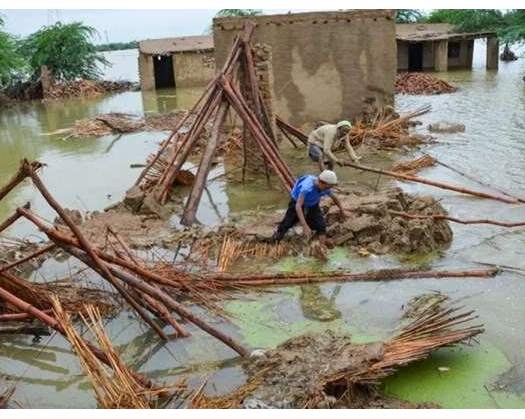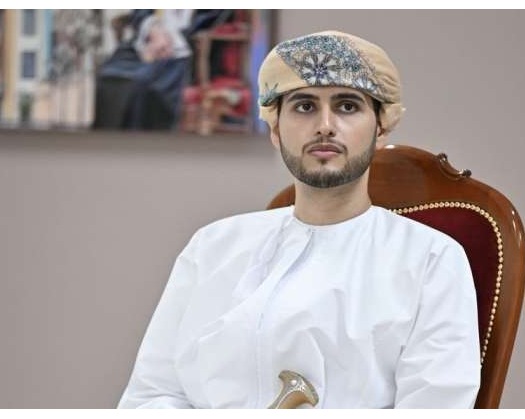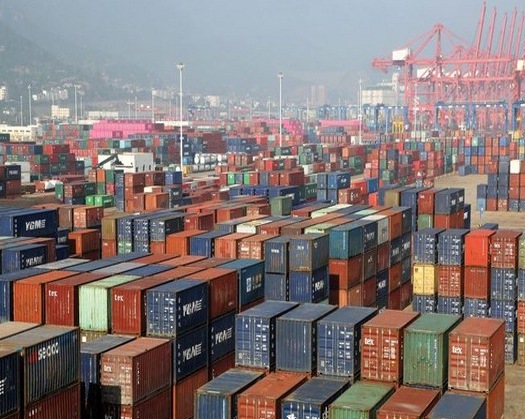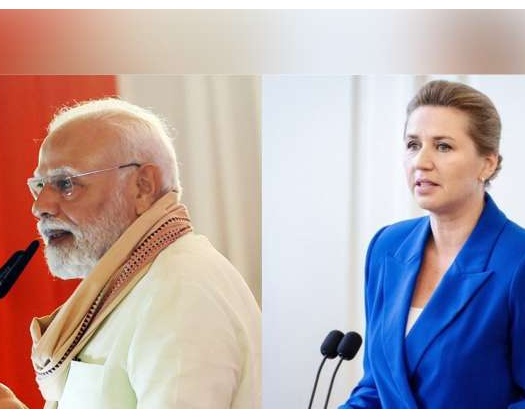In Lagos, Nigeria's capital and the largest city in the country, temperatures have consistently surpassed 95 degrees Fahrenheit throughout the year — a temperature threshold that, when combined with the region's predominant humidity, places a significant strain on the human body's capacity to regulate its internal temperature. This situation poses a considerable risk, particularly for individuals without access to adequate cooling mechanisms.
For instance, Lateefat Rasaq, a civil servant residing in Lagos with her spouse and four children, has experienced the distressing effects firsthand. "In such extreme heat, I frequently find myself feeling dizzy and lightheaded," she shared. "My concern extends beyond my own well-being; I am deeply worried about the safety of my children."
Rasaq and her family, like numerous others in Nigeria, are unable to afford an air conditioner. Consequently, they depend on a simple fan to maintain a semblance of comfort within their apartment. However, the country's frequent power outages render this basic cooling solution inaccessible on a near-daily basis.
As global temperatures continue to rise due to climate change, sub-Saharan African nations, including Nigeria, are witnessing accelerated rates of warming. A study published in the journal Nature Sustainability has identified Nigeria among the five countries anticipated to experience the most significant increase in heat exposure should temperatures escalate by 2 degrees Celsius. Furthermore, as temperatures climb, so does Nigeria's population. Presently, approximately 1 in 7 Africans resides in Nigeria, and projections suggest that by 2050, the country, roughly the size of California, could surpass the United States in terms of global population, becoming the third most populous nation on Earth.
These escalating temperatures and population growth are, in turn, driving a surge in the demand for cooling solutions. However, the availability of air conditioning and even basic fans is constrained by both financial barriers and Nigeria's severe energy shortage. Currently, only about 60% of Nigerians have access to electricity, and many are subjected to unreliable power supply and live in dwellings that offer minimal protection from the heat. This leaves nearly 115 million Nigerians, more than half of the population, without sufficient access to cooling, as reported by Sustainable Energy for All, a nonprofit organization established by the United Nations.
Nigeria is confronted with a multifaceted challenge. It must enhance access to air conditioning while simultaneously developing a more efficient market for air conditioners and expanding access to energy. This predicament perpetuates a vicious cycle: The demand for air conditioning increases, often necessitating the use of fossil fuels and harmful refrigerants, which in turn, contribute to global warming, thereby intensifying the need for cooling solutions.
This underscores the critical importance of passive cooling strategies: the incorporation of well-ventilated structures, verdant green areas, and reflective roofing materials can effectively lower ambient temperatures without contributing to the escalation of greenhouse gas emissions. However, the implementation of such strategies has proven challenging on a widespread scale in Nigeria, a nation where urban expansion is frequently haphazard.
The intensity of heat can become so severe that passive cooling methods alone are insufficient. "Air-conditioning has become a necessity rather than a luxury," stated Okon Ekpenyong, a former director of the Energy Commission of Nigeria. A study conducted by the appliance efficiency NGO CLASP in 2020 revealed that approximately 20% of Nigerians possess air-conditioning in their residences, in stark contrast to the 90% rate observed in the United States during the same period, as reported by the U.S. Energy Information Administration.
Despite Nigeria's relatively low ownership of air-conditioners, the nation boasts the largest air-conditioner market in Africa. Annual sales reach 1 million units, according to an estimate by the United Nations Environment Programme, with this figure not accounting for the secondary market for discarded air-conditioners from Europe and China, where they fail to meet the required performance standards. These units are known to consume two to three times more electricity than their newer counterparts, thereby exacerbating the strain on Nigeria's already overloaded electrical infrastructure. Furthermore, many of these units are equipped with R22 refrigerants, which are detrimental to the ozone layer and have a heat-trapping capacity thousands of times greater than that of CO2.
To expand access to air-conditioning, Nigeria is urged to implement policies and regulations aimed at establishing minimum energy performance standards. Ekpenyong emphasized the importance of not becoming a dumping ground for inefficient and environmentally unfriendly appliances.
This rationale underscores the initiative undertaken by Ekpenyong, who, prior to his recent retirement, spearheaded the development of a comprehensive national cooling strategy aimed at enhancing the efficiency standards for air-conditioners sold within Nigeria and prohibiting the importation of second-hand units.
Ekpenyong articulated that this strategy would incentivize air-conditioning manufacturers in Nigeria, who currently assemble their products domestically, to increase production. This, in turn, would reduce the cost of these products. Without the establishment of minimum energy efficiency standards and a prohibition on the importation of used appliances, the affordability of more energy-efficient products could be compromised by those utilizing outdated and environmentally detrimental technologies, as highlighted by Brian Holuj, who heads a United Nations team supporting Nigeria's national cooling strategy.
Establishing standards represents a critical component of this strategy, yet the more significant challenge lies in providing the necessary power to operate the millions of fans, air-conditioners, and refrigerators essential for maintaining the coolness of Nigerians and their food. In a recent televised address, Nigeria's Minister of Power stated that the country generates approximately 5 gigawatts of electricity, equivalent to that of New York City, according to the state's independent grid operator. However, this power supply is insufficient for a population 25 times larger. Consequently, many Nigerians are compelled to rely on costly and polluting diesel and petrol generators.
To bridge the nation's energy gap, Nigeria is required to undertake several critical actions, as outlined by Damilola Ogunbiyi, the CEO of Sustainable Energy for All. These include expanding the power infrastructure, harnessing the country's abundant renewable energy resources such as solar, hydropower, and wind, and implementing policy and regulatory reforms to attract private investment and facilitate the streamlining of approvals that have previously hindered energy development.
A significant challenge pertains to refrigeration, especially within agricultural settings. An analysis conducted in 2023 within the book "Advances in Food Security and Sustainability" revealed that approximately 40% of fresh produce in Nigeria is discarded due to insufficient cooling facilities on farms.
"Small-scale farmers are the backbone of Nigeria's food supply, yet a considerable number of these farms are not connected to the electrical grid, thereby lacking access to electricity," stated Adekoyejo Kuye, a local entrepreneur. This realization prompted Kuye to establish KAMIM Technologies, a company dedicated to providing solar-powered agricultural solutions, including cold storage units. Kuye posits that Nigerian farmers utilizing KAMIM Technologies' cold storage facilities have managed to halve their wastage rates.
One such farmer benefiting from this innovation is Augustine Owezie, who cultivates a variety of vegetables including peppers, tomatoes, cucumbers, and cassava, on a 5-acre plot in Lagos State. Three months prior to the installation of a KAMIM Technologies cold storage facility adjacent to his farm, Owezie noted a significant increase in his production capacity.
"Prior to the introduction of cold storage, our production levels were markedly lower, as the unsold produce would spoil after market hours, leading to substantial financial losses," Owezie recounted. "Now, the cold storage unit is instrumental in driving farmers towards increased production and financial prosperity," he concluded.

